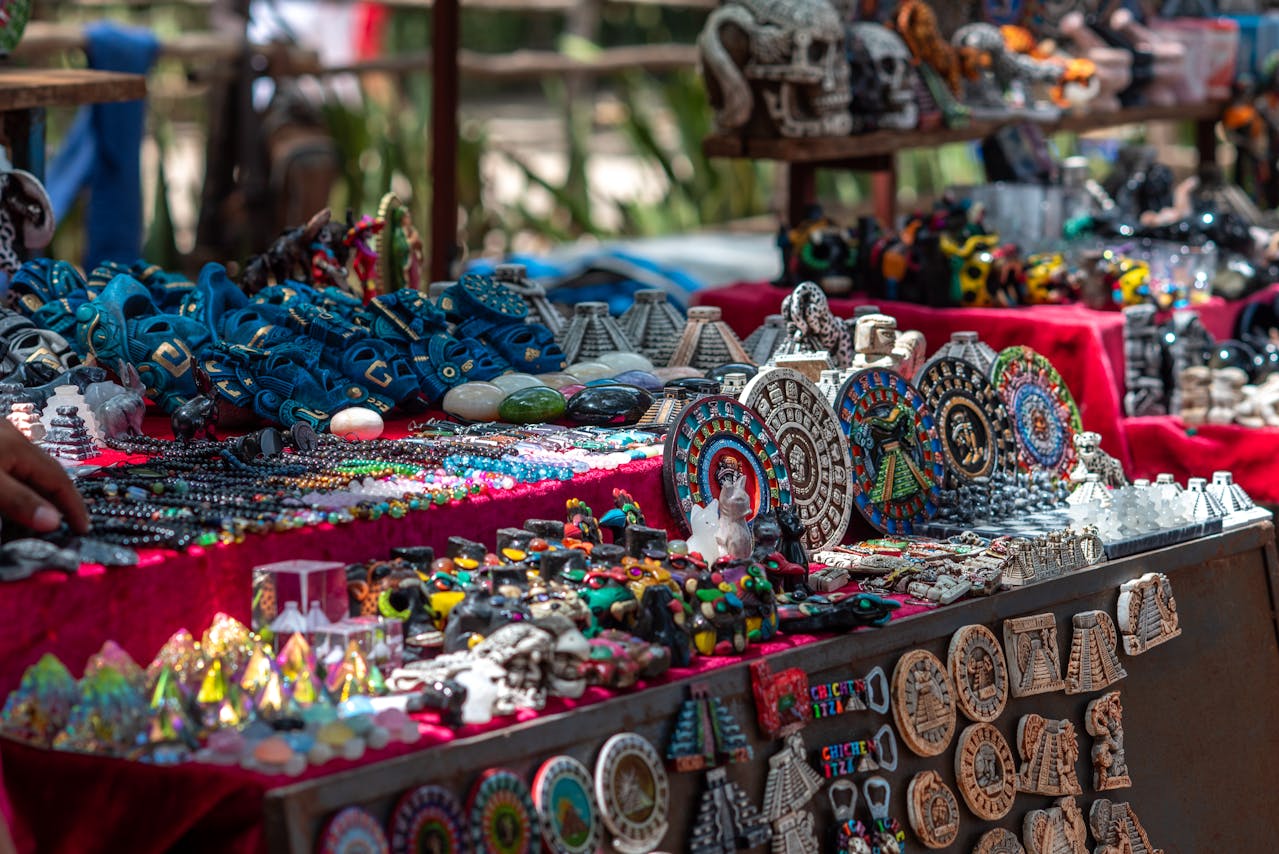Introduction to the Maya Calendar
The Maya calendar system is an intricate framework that played a vital role in the lives of the ancient Mayan civilization. Its development was crucial for various aspects of daily life, including agricultural planning, religious ceremonies, and social events. The calendar not only functioned as a timekeeping method but also acted as a cultural cornerstone, influencing the Mayans’ worldview and their understanding of the cosmos.
Primarily, the calendar was utilized for agricultural purposes, allowing the Maya to optimize crop production by accurately predicting seasonal changes and weather patterns. This precision was pivotal for sustaining their economy, as maize was a staple crop that formed the foundation of their diet. By employing the calendar, the Mayans could determine the ideal times to plant and harvest, ultimately ensuring food security for their communities.
Religiously, the Maya calendar held immense significance as it was deeply intertwined with their spiritual beliefs. Rituals and ceremonies were organized around the calendar, with specific dates deemed auspicious for offerings, sacrifices, and other religious observances. Timekeeping was not a mere practical necessity; it was a sacred practice believed to maintain the balance of the universe and appease their deities.
Socially, the Maya utilized their calendar system to schedule important events such as festivals and communal gatherings. These events reinforced social cohesion and cultural identity within the various Mayan city-states. The calendar fostered a shared understanding of time among the people, which was essential for the organization of their complex society.
The Maya calendar system is indeed a profound testament to the civilization’s sophisticated approach to timekeeping, embodying their agricultural, religious, and social life. The subsequent sections will delve deeper into the two primary components of this calendar—the Tzolk’in and Haab’—offering further insights into their unique structures and significance.
The Structure of the Maya Calendar System
The Maya calendar system is a complex and sophisticated framework that primarily consists of two interrelated calendars: the Tzolk’in and the Haab’. This unique dual system reflects the Mayan civilization’s advanced understanding of time and its cyclical nature. The Tzolk’in is a 260-day calendar, consisting of 20 periods each containing 13 days. Each day has a specific name and number, creating a sequence that rests on the metaphysical significance attributed to certain numbers and their connection to the cosmos. The Tzolk’in is often used for ritual purposes, marking important events and ceremonies.
In contrast, the Haab’ is a 365-day solar calendar comprised of 18 months, each with 20 days, followed by a short month of only five days known as “Wayeb’.” The Haab’ calendar is more aligned with agricultural cycles, determining significant farming events and seasonal changes. Together, the Tzolk’in and Haab’ system operates on a 52-year cycle known as the Calendar Round, which creates a comprehensive framework for dating events over extended periods.
The interplay of these two calendars demonstrates the Mayans’ intricate understanding of time as non-linear and cyclical. Moreover, the Long Count calendar serves as a chronological backdrop, allowing the Maya to track longer periods and historical events. The Long Count employs a structure of units that includes baktuns, katuns, tuns, uinals, and k’in, providing a clear timeline that extends back to the mythological creation date. As a result, the convergence and interaction of the Tzolk’in, Haab’, and Long Count reveal a rich tapestry of beliefs embedded in Mayan culture, emphasizing their profound connection to the cosmos and the natural world.
Understanding Tzolk’in: The Sacred Calendar
The Tzolk’in is a pivotal component of the Maya calendar system, consisting of a 260-day sacred calendar primarily utilized for religious and ceremonial purposes. This intricate calendar reflects the deep spiritual beliefs and cultural practices of the Maya civilization. The Tzolk’in is organized into a cyclical framework that combines 20 unique day signs with numbers ranging from one to thirteen. Each day sign, which includes representations such as the Jaguar, the Wind, and the Reed, embodies distinct qualities and attributes that resonate with various aspects of the natural and spiritual worlds.
The cyclical nature of the Tzolk’in plays a significant role in shaping the Maya worldview. Each day within the 260-day cycle is linked to a specific day sign and corresponding number, creating a unique identifier for every day. This structure promotes a harmonious relationship between the cosmic and terrestrial realms, allowing the Maya to align their activities, ceremonies, and agricultural practices with the energies believed to be present during each day. For instance, specific days were deemed auspicious for certain rites or tasks, making the Tzolk’in a guiding force in daily life and an essential tool for spiritual guidance.
<pmoreover, a="" affecting="" agricultural="" an="" and="" as="" associated="" beliefs,="" both="" by="" calendar,="" chronological="" community="" concept="" connection="" cosmological="" cultural="" cycles,="" cyclical="" dimension,="" embodiment="" emphasizing="" encapsulating="" engaging="" events="" fabric="" fosters="" identity="" impact="" interwoven="" is="" it="" its="" linear="" lives.="" maintained="" maya="" maya's="" merely="" metaphysical="" not="" of="" often="" on="" p="" perceived="" perspective="" physical="" practices.
The 20 Day Signs of Tzolk’in
The Tzolk’in calendar is a complex system that consists of 20 unique day signs, each representing different attributes and energies. These day signs play a crucial role in Mayan mythology and culture, influencing various aspects of life, including character traits and significant events.
The first day sign is ‘Imix’, symbolizing the beginning and representing the primal force of creation. Those born under Imix are often seen as nurturing and intuitive. The second sign, ‘Ik’, embodies the winds and is associated with communication and the spirit. Individuals linked to Ik are known for their eloquence and adaptability.
Following Ik, we encounter ‘Akbal’, symbolizing the night and the subconscious. People born on this day are often introspective and deeply connected to their emotions. The fourth sign, ‘Kan’, represents abundance and fertility, reflecting a strong connection to nature and prosperity.
<p'chicchan', 'cimi',="" a="" and="" are="" born="" by="" chicchan="" cycle="" day="" death,="" dynamic="" fifth="" force="" granting="" influence="" influenced="" its="" life="" of="" often="" p="" passionate.="" profound="" represents="" sign,="" sixth="" symbolizes="" the="" those="" transformation.
As we move to ‘Manik’, the seventh sign, it embodies healing and service, indicating a person’s propensity for caring and helping others. Next is ‘Lamat’, representing harmony and beauty, often associated with creativity and artistic expression.
‘Muluc’, the ninth sign, relates to emotional connections and intuition, while ‘Oq’ represents the pure clarity and truth of thought. Each subsequent sign continues to entwine rich symbolic meanings with elements of nature, emotion, and the cosmos, providing insight into one’s character and potential life path.
The final signs—’Sik’ (representing movement and action), ‘K’an’ (the embodiment of prosperity), ‘B’en’ (symbolizing direction and purpose), ‘Tz’ikin’ (reflecting abundance and blessings), ‘Ajaw’ (the culmination of solar energy and authority)—contribute to the understanding of oneself and the universe, ultimately inviting reflection on one’s place within the vast tapestry of existence.
Understanding Haab’: The Civil Calendar
The Haab’ is a vital aspect of the Maya calendar system, functioning as a civil calendar that spans 365 days. This calendar was primarily used for agricultural purposes, regulating farming activities and ceremonial events that were integral to Mayan society. The structure of Haab’ is distinct, comprising 18 months, each containing 20 days, followed by an additional month known as Wayeb’ that includes 5 unnumbered days. This configuration sets the Haab’ apart from other calendar systems, highlighting the Mayans’ unique approach to measuring time.
The 18 months in the Haab’ are named distinctly, and each month carries significant meaning and cultural importance. The regular months, each with 20 days, are essential for tracking the agricultural cycle, including planting and harvest times. The names of these months often reflect various aspects of Mayan life, indicating the cultural and economic relevance of agriculture within their daily routines.
The addition of the 5 unnumbered days in the Wayeb’ serves a critical purpose in the Haab’. These days were considered to be a time of reflection and preparation, marking the transition to a new cycle within the year. It was believed that these days were spiritually charged, thus requiring caution and reverence among the Maya. The significance of the Wayeb’ days cannot be overstated, as they represented a time when ordinary activities were often suspended, allowing individuals to engage in rituals and offerings.
The Haab’ calendar also influenced social organization, as it dictated not only agricultural practices but also ceremonial gatherings and festivals. As a result, the Haab’ was not merely a way to track time, but a comprehensive system deeply intertwined with the religious, agricultural, and social fabric of Mayan life. Understanding the intricacies of the Haab’ reveals the profound connection the Maya had with their environment and the calendar’s role in sustaining their civilization.
The Months of Haab’ and Their Significance
The Haab’ calendar, a crucial component of the Maya calendar system, consists of 18 months, each with distinct names and characteristics, followed by an additional month referred to as ‘Wayeb.’ Each of these months played a vital role in the agricultural cycle of the ancient Maya civilization. The Haab’ served not only as a chronological framework but also as a guide for rituals and seasonal events that were essential for community life.
The first month, Pop, is associated with fertility and the start of the agricultural year. This period marks the time when Maya farmers would begin preparations for planting crops. Following Pop is Wo, which is often celebrated for its association with growth, emphasizing the lush vegetation that emerges in early spring.
In the month of Zip, communities engage in rituals to honor their deceased ancestors, reflecting the Maya’s deep respect for their lineage. The next months—Zotz, Tz’ikin, and Sek, respectively—are characterized by various ceremonies that center around pollination and the blossoming of agricultural products, essential for harvests that sustain the community.
As the year progresses, we move to the months of Xul and Yaxkin, closely tied to the harvest season. These periods are marked by celebrations of bounty, which coincide with the gathering of crops. The rituals performed during these months are fundamental in expressing gratitude to the deities for a fruitful yield. The month of Muwan emphasizes purification rites and is often linked to rain, a critical element for crop duration.
Finally, the last month of the year, K’ank’in, symbolizes the culmination of the agricultural cycle, ushering in a time of reflection and preparation for the subsequent year. The addition of Wayeb, comprising five unnumbered days, is seen as a period of transition and renewal, where the Mayans pay homage to their gods while preparing for the new cycle. The Haab’ calendar’s months and their associated rituals underscore the interconnectedness of nature, spirituality, and community amongst the Maya civilization.
Interplay Between Tzolk’in and Haab’
The Tzolk’in and Haab’ calendars are two fundamental components of the Maya calendar system, each serving distinct functions while simultaneously intertwining to form a comprehensive framework for temporal understanding in Mayan society. The Tzolk’in, a 260-day ritual calendar, consists of 13 cycles of 20 named days. In contrast, the Haab’, a solar calendar of 365 days, is composed of 18 months of 20 days, plus an additional month of five days known as Wayeb’. This unique structure allows for the rich interplay between the two calendars, resulting in a complex system that informs both daily life and religious practices.
This relationship culminates in the Calendar Round, a 52-year cycle where the Tzolk’in and Haab’ calendars realign. Each year within the Calendar Round consists of a unique pairing of one Tzolk’in day and one Haab’ month, creating a total of 18,980 distinct days. This cyclical nature underscores the significance of the Calendar Round to the Maya, as it marked a time of renewal and reflection within their cultural and spiritual life. When the two calendars converge, it is perceived as a pivotal moment, often associated with various rituals and celebrations meant to honor gods, ancestors, and the natural cycles of the universe.
Moreover, the interplay between Tzolk’in and Haab’ was instrumental in organizing social events and agricultural activities around the rhythm of the year. Specific days within the Tzolk’in were designated for ceremonies, while the Haab’ provided a framework for seasonal changes, agricultural cycles, and civic life. This synchronization of time not only facilitated the effectiveness of religious observance and agricultural productivity but also served to strengthen community bonds among the Maya, making the Calendar Round a central aspect of their civilization.
The Impact of the Maya Calendar on Modern Society
The enduring legacy of the Maya calendar, particularly the Tzolk’in and Haab’, continues to resonate within contemporary culture, shaping numerous facets of modern society. As awareness of the richness of Mayan civilization grows, the calendar serves not only as an artifact of historical significance but as a living system that invites reinterpretation and integration into current practices. The cyclical nature of the calendar has inspired various contemporary approaches to time, emphasizing a more organic relationship with temporal cycles as opposed to the linear perspective often found in Western cultures.
One notable impact can be observed in the realm of astrology. Modern practitioners of astrology often draw from ancient systems, including elements of the Maya calendar, to develop a holistic understanding of human behavior and its synchrony with celestial events. The Tzolk’in, with its 260-day cycle, plays a pivotal role in astrological insights, as practitioners correlate individual characteristics with specific days and kin. This blending of ancient and modern astrological practices enhances interest in the Maya traditions and invites a new demographic to explore these age-old concepts.
The influence of the Maya calendar extends into art and spirituality, as modern artists and spiritual seekers alike draw inspiration from its intricate designs and profound philosophical implications. Artists incorporate elements of the Tzolk’in and Haab’ in contemporary artworks, reflecting themes of cyclical existence and connectedness to nature. Similarly, spiritual practices are revived or adapted, with some individuals embracing the calendar as a guide for personal development, ritual, and meditation. This resurgence fosters a greater appreciation for Mayan culture, encouraging cross-cultural exchanges and a sense of shared heritage.
In conclusion, the Maya calendar’s impact on modern society is multifaceted, bridging past and present while inspiring new interpretations in astrology, art, and spirituality. Its ongoing relevance highlights the importance of preserving and understanding ancient knowledge, which continues to inform and enrich contemporary life.
Conclusion
The Tzolk’in and Haab’ calendars serve as foundational elements in the complex timekeeping system of the Maya civilization, underscoring their sophisticated understanding of both the celestial and terrestrial worlds. Each calendar, operating on its distinct cycle, comprises intricate interrelationships designed to track not only daily activities but also significant rituals, agricultural practices, and sociopolitical events. The Tzolk’in, comprising 260 days, illustrates the Maya’s deep connection with cyclical time and spirituality, while the Haab’, spanning 365 days, reflects their agrarian society and seasonal changes.
The fusion of these two calendars into the larger Calendar Round of 52 years exhibits the Maya’s robust framework for time measurement, facilitating a structured yet flexible approach to their daily lives. This dual-system emphasizes the importance of balancing the spiritual and the practical, highlighting the core value the Maya placed on aligning themselves with natural and cosmic rhythms. Moreover, the calendars also served as tools for recording history, thereby preserving knowledge across generations.
In a broader socio-cultural context, the Tzolk’in and Haab’ calendars not only guided individual lives but also unified the community, fostering a shared identity grounded in time. The reverence associated with these calendars reflects an intrinsic relationship with nature and the universe, illuminating the depth of Mayan cosmology. As we appreciate the ingenuity behind these calendars, we recognize the lasting impact of this ancient wisdom on understanding human existence in relation to the vast expanse of time and space. The intricate tapestry of the Maya calendar system continues to inspire awe and gratitude for its enduring legacy in the study of ancient civilizations.

We share information about current trends and stories of people all around the world.



